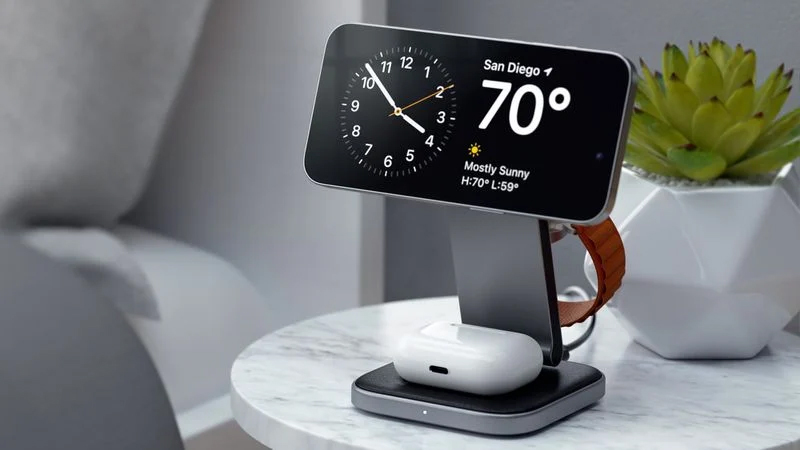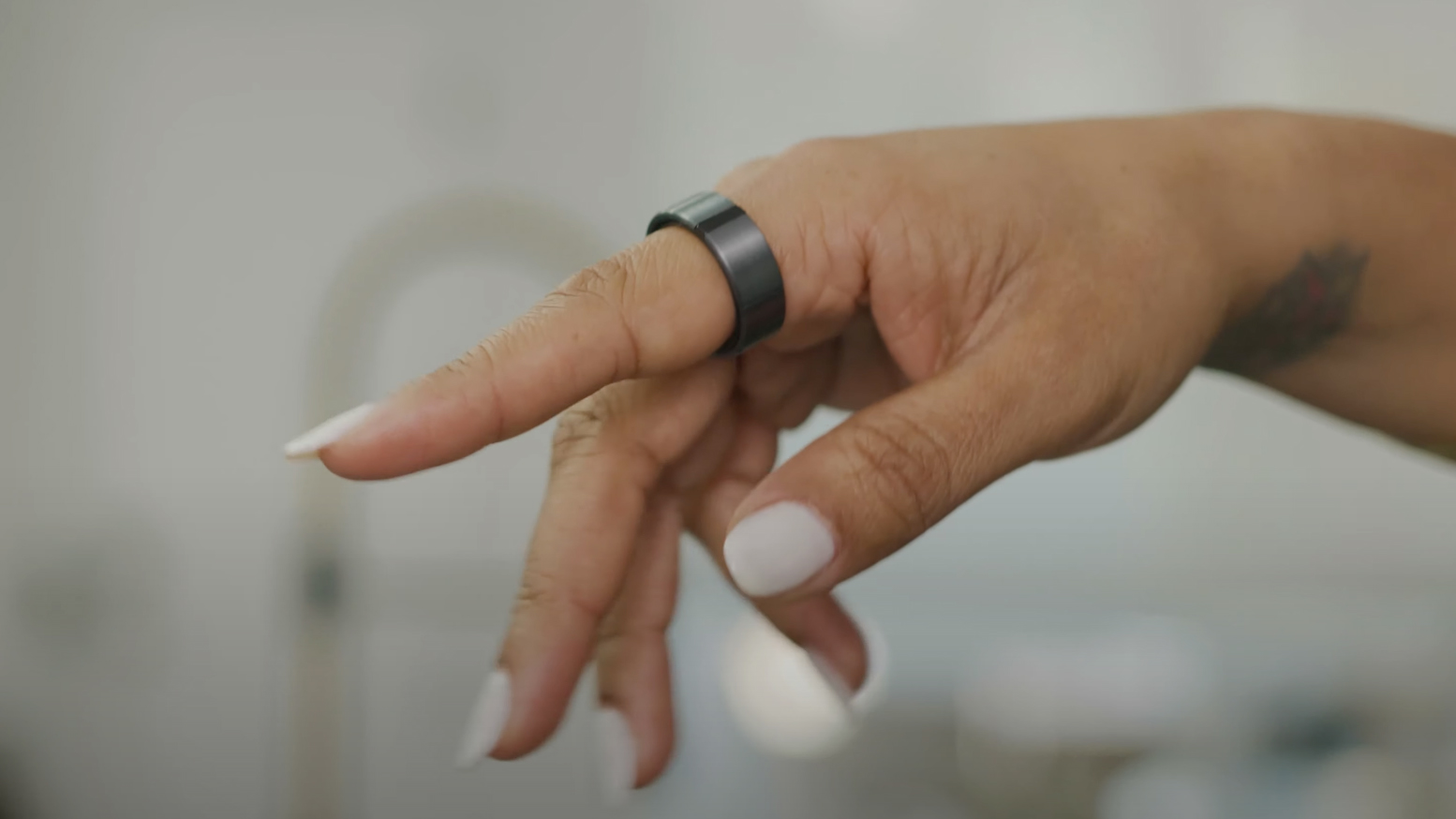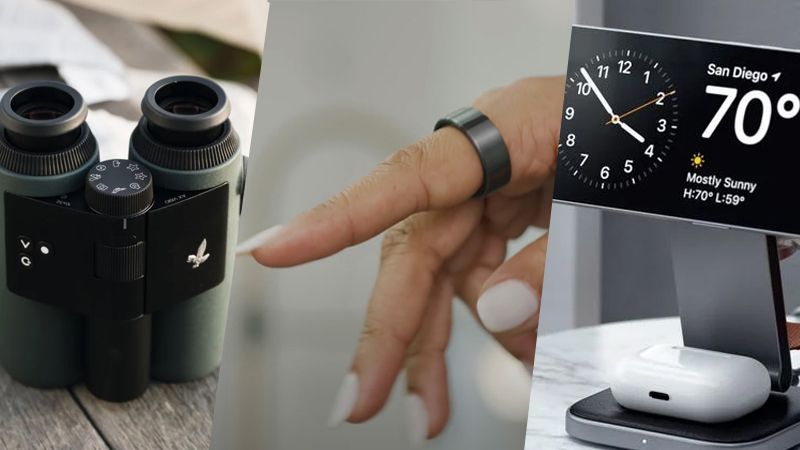CES 2024 has delivered what will almost certainly be some of the best TVs, best laptops and finest smart home tech of the year. But it’s also a show about clever ideas and delivering new accessories that we didn’t know we needed, plus a few that haven’t been invented for good reason.
After hours of scouring the CES 2024 show floor, we’ve rounded up our pick of the former – the most promising accessories and gadgets that have done the seemingly impossible and come up an original, or clever twist, on consumer tech.
While we had a pretty good idea of what to expect when heading to CES this year, we also didn’t foresee getting excited about neural headphones, bird-identifying binoculars, smart mattress toppers and wearable ovens.
Not all of those ideas will be smash hits in 2024, but we reckon there’s something smart about each of the products below that could ultimately make their concepts commonplace in our tech lives. Here’s our pick of the smartest accessory ideas of CES 2024…
1. Auto-tracking iPhone stands: Belkin Stand Pro
We’ve seen motorized phone stands that track your movements before – see our Pivo Max review for more – but the Belkin Auto-Tracking Stand Pro is different because it’s the first to use Apple‘s new DockKit API. The benefit? It means you don’t have to use a third-party camera app to be tracked around a scene, but can instead use the default iPhone camera or FaceTime.
That’s a big boon for usability and also more advanced shooters who want to tweak their video settings, which is not always possible in the apps that come with similar docks. The motorized stand promises to follow you during video calls, livestreams or TikTok shoots, with the only downside being the $179.99 / £169.99 / AU$299.95 price tag. You can pre-order it now from Belkin’s site, with availability in the next few months.
2. Neural headphones: Naqi Neural Earbuds
The idea behind ‘neural headphones’ (which tap into your auditory nerve to help you perform various hands-free tricks) pre-dates CES 2024, but this year’s show might just be their breakout moment. We saw several examples of the concept at CES, but the most compelling might just be the Naqi Neural Earbuds.
They use a combination of gyroscopic, muscle and brainwave sensors to effectively give you a non-invasive alternative to a brain implant, giving you full control of Windows and Mac computers. They’re not available to buy yet, with Naqi now looking for manufacturing partners, but the tech did win a CES 2024 Innovation Award honoree for accessibility and aging tech.
3. Ultimate camping battery: Anker Solix C800 Plus
One of the biggest areas of tech innovation at CES 2024 has been around batteries –and alongside massive home cells that can keep your house running during blackouts (see no.11 further down), we also saw Anker‘s multi-talented, camping-friendly SOLIX C800 Plus.
At its heart, the C800 Plus (£TBC, out in March) is a 768Wh or 1200W battery that’s capable of charging up to ten devices simultaneously, as well as mini fridges or microwaves. But its top compartment also contains a three-mode camping light with a handy telescopic pole, which can be popped out and used to mount the light or a camera, phone or even small projector.
With water-resistant LEDs and HyperFlash charging (which can fully recharge the battery from flat in only 58 minutes), it could be this year’s essential accessory for off-grid adventures.
4. AI fitness coach headphones: Mojawa HaptiFit Terra
Another big theme of 2024 is likely to be AI fitness coaches – and the Mojawa HaptiFit Terra ($199.99 / £239.99, out Q1 2024) from this year’s CES are one of the most fully-formed examples of the idea we’ve seen so far. The bone-conduction headphones pair with a companion app, which is home to an AI trainer than can apparently deliver auto-generated exercise plans and feedback on your workout stats.
With 32GB on onboard storage and IP68 water-resistance, the headphones could be particularly handy for swimmers. The only downside is that Mojawa is currently a little vague about exactly how the AI works – so it might be wise to wait to see how well Fitbit’s incoming AI chatbot works or if Apple ultimately joins the AI coach party.
5. Bird-identifying binoculars: Swarovski Optik AX Visio
Bird-watching hasn’t traditionally been a source of much CES excitement, but twitchers were in the tech spotlight this year thanks to the world’s first bird-identifying binoculars – the Swarovski Optik AX Visio.
Thanks to a built-in neural processing unit, the 10 x 32 magnification binoculars can scan through their database of 9,000 species of birds and label which type it thinks you’re looking at. Like many digital binoculars, they also double as a (fairly basic) camera capable of shooting 13MP stills or 1080p video.
At $4,799 / £3,820 (or around AU$7,260), they don’t exactly have Christmas stocking filler potential, but the AX Visio’s might be this year’s most prized accessory for tech-loving birders.
6. AI pet trackers: Invoxia Minitailz AI smart collar

Pets weren’t left out of the CES 2024 party – and while dogs and cats are known to bristle at the mere mention of AI hype, this new smart collar might just bring them around.
That’s because the little Minitailz, which attaches to most collars, is designed to not just track your pet’s whereabouts but also monitor their overall health in real-time. It can track resting heart-rate and respiratory rates, along with your pet’s heart signature – which means it could detect things like the early signs of heart failure.
Like a Fitbit for dogs and cats, the Minitailz also records daily activities automatically, with the software’s AI component also monitoring their sleep, barking and more. We’ll need to test the Minitailz before passing proper judgement on whether it’s overkill or not. But anything that gives us extra insight into our pet’s health is a good thing in our book.
7. Folding Qi2 charging stands: Satechi 3-in-1

A wave of charging stands that support the new Qi2 standard landed at CES 2024, and our favorite was Satechi’s new 3-in-1 model. The Qi2 wireless charging standard isn’t yet supported by many phones, aside from the iPhone 15 series, but we’ll start to see more Android phones support it this year – and when they do, they’ll benefit from MagSafe-style speeds with compatible chargers.
As its name suggests, Satechi’s 3-in-1 design also includes a 5W Apple Watch charger and another 5W wireless charger that’s designed for your AirPods. Even better, it supports the orientation for Apple’s StandBy mode and also folds flat for when you’re traveling, which is something its rivals don’t do. The charger will cost $130 (around £105 / AU$195) when it goes on sale in Q2 (sometime between March and May).
8. Home-controlling smart rings: Lotus ring

Most smart rings, like the Amazfit Helio Ring, are designed to track your sleep, fitness and health. But the Lotus Ring is a little different, instead aiming to be a wearable controller that lets you turn on lights, power up appliances, adjust the TV volume (in a future iteration) and more with small gestures.
The downside of the Lotus Ring is it’s based on an infrared tech, so only works with compatible Lotus smart home products. But we like the concept and it’s mainly designed to help those with limited mobility who don’t already have a bunch of existing smart home tech. You can pre-order the Lotus Ring (the final price is still $TBC) in the US now ahead of its release later this year, though no international launch details have been announced.
9. Infrared hairdryers: Loreal AirLight Pro
Hairdryers have been getting a much-needed tech overhaul ever since the Dyson Supersonic landed and left our hair feeling uncharacteristically luxurious – and the Loreal AirLight Pro has followed in its slipstream with some impressive advances, including infrared tech.
Those infrared heating elements help to reduce the amount of heat and energy the AirLight Pro produces and uses, while also apparently drying your hair up to 30% faster than a traditional blower. We were also impressed by some other neat features, including the fact that it can recognize attachments and tweak its settings based on which one you’ve fitted.
Of course, you’ll have to be convinced that your hair is worth such treatment, as Loreal’s hairdryer will cost around $400 (about £315) price tag when it goes on sale in Europe in June and in the US sometime by the end of 2024.
10. Wearable ovens: Willtex Willcook
We didn’t think we needed a wearable oven before CES 2024 and we’re still not completely convinced that we do. But the prospect of owning one has certainly got a little closer after we tried the Willtex Willcook on the show floor.
Yes, we stuck our hand inside and, yes, it mildly burned our fingers. Despite looking like a traditional bag, the Willcook definitely gets hot enough to slow-cook food (even meat, fish and curry, apparently). This is all thanks to its “embedded heat ray”, which could sort out your dinner while you’re on the commute home or on-the-move while camping.
Using the tech inside winter coats (which is another of Willtex’s ideas) does seem to make more sense. But we can’t quite shake the thrilling idea of telling people that our bag also secretly cooks food.
11. Giant home batteries: Ecoflow Delta Pro Ultra
Battery systems that can power your home aren’t a new idea, but they are gaining in popularity as we increasingly get hit by power outages and blackouts caused by extreme weather events – and the Ecoflow Delta Pro Ultra, launched at CES 2024, is one of the most impressive we’ve seen so far.
It’s a versatile piece of kit that can both act as your home’s emergency backup and, on quieter days, also be wheeled around to wherever you need a boost of power. The Delta Pro Ultra can also intelligently offset your daily energy costs and form part of a stackable system (if you have the budget) that’ll serve all your power needs for days.
With a ton of outlets on board (including two with USB-C, two more with USB-A and four with standard 120V outputs, to name a few) it’s a premium home battery that understandably isn’t cheap. You can buy a single battery kit and Smart Home Panel 2 (which integrates the battery with your house) together for $7,199 (about £5,655 / AU$10,750) or get the two separately. A bit more than your average backup smartphone battery, then, but also a darn sight more useful.
We’re covering all of the latest CES news from the show as it happens. Stick with us for the big stories on everything from 8K TVs and foldable displays to new phones, laptops, smart home gadgets, and the latest in AI.
And don’t forget to follow us on TikTok for the latest from the CES show floor!






